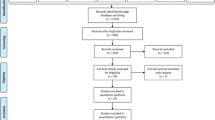Abstract
Equipment of mobile phones with various kinds of sensors is transforming these devices from mere capabilities of voice and internet access to devices capable of sensing a number of phenomena pertaining to their users. In this paper we make use of these capabilities of phones to detect social interactions between people and analyze social context by using embedded sensors found in typical smart phones. Work carried out in this area has typically used dedicated hardware to establish social interactions, and we contend on the suitability of mobile phone, since additional devices that user is not familiar with influence natural user behavior and thus their social interaction patterns. Our work shows that two parameters that can be detected through mobile phone sensing, namely interpersonal distance and relative body orientation, provide a solid basis for inferring social interactions. We describe how these factors are acquired using smart phones and describe our analysis. The experiments demonstrate that we can recognize not only whether a social interaction is taking place, but also the type of social interaction, distinguishing between formal and informal social settings.










Similar content being viewed by others
References
Eagle NN (2005) “Machine perception and learning of complex social systems,” Massachusetts Institute of Technology
Eagle N, (Sandy) Pentland A (2005) Reality mining: sensing complex social systems. Pers Ubiquit Comput 10(4):255–268
Do TMT, Gatica-Perez D “Contextual grouping: discovering real-life interaction types from longitudinal Bluetooth data,” infoscience.epfl.ch
Wyatt D, Choudhury T, Bilmes J (2011) “Inferring colocation and conversation networks from privacy-sensitive audio with implications for computational social science.” ACM Transactions on Intelligent Systems and Technology (TIST) 2(1)
Cristani M, Pesarin A, Vinciarelli A (2011) “Look at who’s talking: voice activity detection by automated gesture analysis,” in Workshop on Interactive Human Behavior Analysis in Open or Public Spaces
Eagle N, (Sandy) Pentland A (2005) Reality mining: sensing complex social systems. Pers Ubiquit Comput 10(4):255–268
Hidalgo CA, Rodriguez-Sickert C (2007) The dynamics of a mobile phone network. Physica A: Stat Mech Appl 387(12):3017–3024
Raento M, Oulasvirta A, Petit R, Toivonen H (2005) ContextPhone: a prototyping platform for context-aware mobile applications. IEEE Pervasive Comput 4(2):51–59
Mardenfeld S, Boston D, Pan SJ, Jones Q, Iamntichi A, Borcea C (2010) “GDC: Group Discovery using Co-location traces,” 2010 IEEE Second International Conference on Social Computing, pp. 641–648
Do TMT, Gatica-Perez D (2011) “GroupUs: Smartphone proximity data and human interaction type mining,” in 5th annual International Symposium on Wearable Computers, no. 2
Banerjee N, Agarwal S, Bahl P, Chandra R, Wolman A, Corner M (2010) “Virtual compass: relative positioning to sense mobile social interactions,” Pervasive Computing, pp. 1–21
Lane ND et al (2010) “BeWell: A smartphone application to monitor, model and promote wellbeing,” in 5th International Conference on Pervasive Computing Technologies for Healthcare (PervasiveHealth2011)
Bhagwat P, Raman B, Sanghi D (2004) Turning 802.11 inside-out. ACM SIGCOMM Comput Commun Rev 34(1):33
Matic A, Papliatseyeu A, Osmani V, Mayora-Ibarra O (2010) “Tuning to your position: FM radio based indoor localization with spontaneous recalibration,” 2010 IEEE International Conference on Pervasive Computing and Communications (PerCom), pp. 153–161, Mar
Groh G, Lehmann A, Reimers J, Frieß MR, Schwarz L (2010) “Detecting social situations from interaction geometry,” in IEEE International Conference on Social Computing/IEEE International Conference on Privacy, Security, Risk and Trust
Shi Y, Shi Y, Liu J (2011) “A rotation based method for detecting on-body positions of mobile devices,” in Proceedings of the 13th International Conference on Ubiquitous Computing
Hall E (1966) The hidden dimnesion. Double Day Anchor Books, New York
Gatica-Perez D (2009) Automatic nonverbal analysis of social interaction in small groups: a review. Image Vis Comput 27(12):1775–1787
Groh G, Lehmann A, Souza MD (2011) “Mobile Detection of Social Situations with Turn Taking Patterns,” in WAC2011
Allen TJ (2000) “Architecture and communication among product development engineers,” Proceedings of the 2000 IEEE Engineering Management Society, vol. 49, no. 2. UNIVERSITY OF CALIFORNIA, p. 153
Fish RS, Root RW, Chalfonte BL (1990) “Informal communication in organizations: Form, function, and technology,” in Human reactions to technology: Claremont symposium on applied social psychology
Whittaker S, Frohlich D, Daly-Jones O (1994) “Informal workplace communication: What is it like and how might we support it?,” in Proceedings of the SIGCHI conference on Human factors in computing systems: celebrating interdependence, pp. 131–137
Aalbers R, Koppius O, Dolfsma W (2006) “On and off the beaten path: Transferring knowledge through formal and informal networks,” CIRCLE Electronic Working Paper Series
Fischbach K, Gloor PA, Schoder D (2008) Analysis of informal communication networks – a case study. Bus Inf Syst Eng 1(2):140–149
Acknowledgments
We would like to acknowledge Iacopo Carreras and Piret Saar for their assistance and development of the mobile phone application.
Author information
Authors and Affiliations
Corresponding author
Rights and permissions
About this article
Cite this article
Matic, A., Osmani, V. & Mayora-Ibarra, O. Analysis of Social Interactions Through Mobile Phones. Mobile Netw Appl 17, 808–819 (2012). https://doi.org/10.1007/s11036-012-0400-4
Published:
Issue Date:
DOI: https://doi.org/10.1007/s11036-012-0400-4




